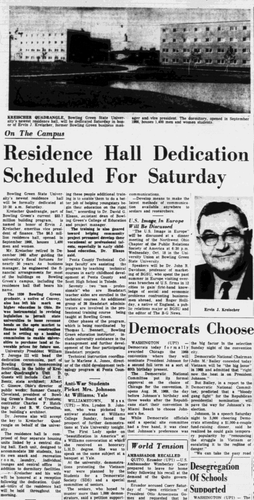


The average household size was 2.16 and the average family size was 2.82. 35.8% of all households were made up of individuals, and 7.2% had someone living alone who was 65 years of age or older. There were 11,288 households, of which 18.9% had children under the age of 18 living with them, 30.7% were married couples living together, 7.5% had a female householder with no husband present, 3.2% had a male householder with no wife present, and 58.6% were non-families. Hispanic or Latino of any race were 4.8% of the population. The racial makeup of the city was 87.6% White, 6.4% African American, 0.2% Native American, 2.1% Asian, 1.4% from other races, and 2.2% from two or more races. There were 12,301 housing units at an average density of 979.4 per square mile (378.1/km 2). The population density was 2,390.8 inhabitants per square mile (923.1/km 2). Bowling Green, Ohio is in the North Western hemisphere at approximately 41.376132°N, -83.623897°W.Ĭlimate data for Bowling Green, Ohio, 1991–2020 normals, extremes 1893–presentĭemographics Historical population CensusĪs of the census of 2010, there were 30,028 people, 11,288 households, and 4,675 families living in the city. The nutrient-rich soil makes for highly productive farm land. īowling Green is within an area of land that was once the Great Black Swamp which was drained and settled in the 19th century. Geography Īccording to the United States Census Bureau, the city has a total area of 12.61 square miles (32.66 km 2), of which 12.56 square miles (32.53 km 2) is land and 0.05 square miles (0.13 km 2) is water. No one was hurt and there was no property damage in the incident. It traveled more than 65 miles south of Toledo before being stopped by a veteran railroad worker near Kenton he jumped into the train while it was moving. Ī runaway freight train carrying hazardous liquids passed through Bowling Green in 2001, in what is known as the known as the CSX 8888 incident. They were used to staff the Heinz Tomato Ketchup factory in town. ĭuring World War II Italian and German prisoners of war were held nearby. Their armed confrontation resulted in the death of Billy the Killer. It eventually went out of business as the industry became centralized in Detroit, Michigan.īank robbers Pretty Boy Floyd and Billy the Killer encountered police in Bowling Green in April 1931. In late 1922 or early 1923, Coats Steam Car moved to the area and hired numerous workers. This period was followed by an expansion of the automobile industry. The Neoclassical US post office was erected in 1913. A new county courthouse was also constructed in the 1890s. The results of wealth generated at the time can still be seen in the downtown storefronts, and along Wooster Street, where many of the oldest and largest homes were built. With the discovery of oil in the area in the late 19th and early 20th century, Bowling Green enjoyed a boom to its economy. In 1868 Bowling Green was designated as the county seat, succeeding Perrysburg. The village was named after Bowling Green, Kentucky, by a retired postal worker who had once delivered mail there. Bowling Green is the home of Bowling Green State University.īowling Green was first settled in 1832, was incorporated as a town in 1855, and became a city in 1901. It is part of the Toledo Metropolitan Area and a member of the Toledo Metropolitan Area Council of Governments. The population was 30,808 at the 2020 census. To view the rest of the Daily Sentinel-Tribune, as well as a number of other area newspapers archived on microfilm, visit the Local History Collection in person.Bowling Green is a city in and the county seat of Wood County, Ohio, United States, located 20 miles (32 km) southwest of Toledo. Sentinel-Tribune Online Access: In-library access to digital versions of the Sentinel-Tribune 1906 - 1988 via.This database also provides ongoing indexing to the BG Independent News with scattered coverage beginning with 2022. Local Newspaper Index: This database provides a partial index to articles of local interest found in the Sentinel-Tribune from the 1960s to 1995 and comprehensive coverage from 1995 to the present.This project funded in part through an Institute of Museum and Library Services LSTA grant awarded by the State Library of Ohio and the Mearl and Lolita Guthrie estate. Wood County Historical Newspapers: Online collection of several Wood County newspapers, including the weekly Wood County Sentinel-Tribune (from 1867-1924) and the Daily Sentinel-Tribune (from 1890-1924).


 0 kommentar(er)
0 kommentar(er)
